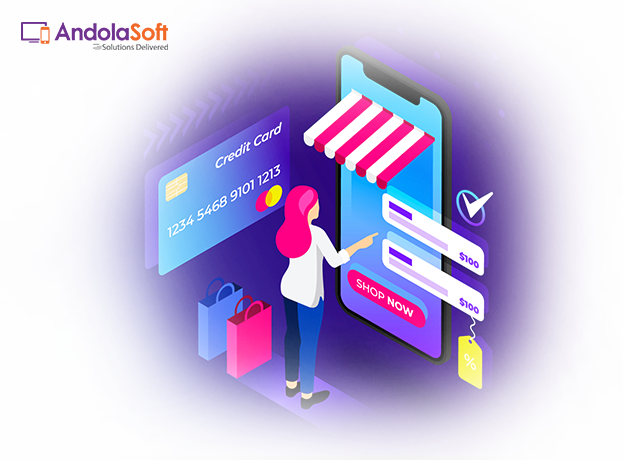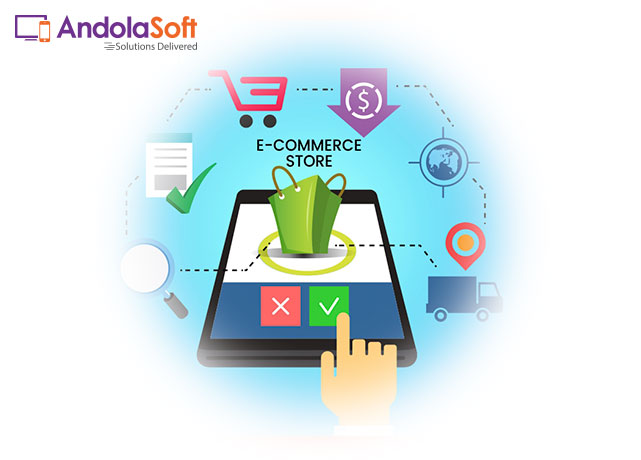One of the industries, which is cultivating at a very fast rate is e-commerce. Due to the continuous raising awareness about its enormous benefits, the future is going to be highly dependent on online businesses. The improvement we are seeing in the innovative ideas and technology advancement, mobile or smartphones are one of the driving forces for these changes.
Mobile is now becoming one of the pivotal requirements of e-commerce business as it is a direct driver of e-commerce development. It drives almost up to one-third of the website traffic. They are continuing to become the best medium for constantly sharing information, as they help them to stay ahead of the competition.
Smartphones are becoming the best medium for viewing or receiving information these days, and they are also important for the business. Gone are those days when apps were considered a luxury by a web-based company. These days apps are becoming a necessity for engaging users. E-commerce portal like WAKI is providing its customers with mobile-based application in Saudi Arabia, for simplifying their shopping experience.
Building mobile apps for an e-commerce business will allow the companies to be at the right fingertips of customers when they are ready to make purchases. This will ensure the overall increase in sales.
There are many other reasons why e-commerce business needs to consider building a personalized apple store app or mobile app for increasing sales.
-
Preferred over mobile browsing
Due to the lack of time in this fast-moving world, users don’t want to invest any time in browsing through their phones. They want an application which they can directly open up in mobile, from the home screen, and have all the information, in front of them instantly. Offering this facility to the user will remove the need to open a browser, find out the website, and then navigate. Through the app, they can directly open it and start shopping. Almost 78% of smartphone users stated that they prefer using a mobile app for receiving their information than using a mobile browser.
-
Constant contact and Push notification
E-commerce businesses are very well aware of the fact that it is extremely important to maintain constant connections with the clients, for sharing information, promotions, sales or any other factor that will allure the buyer to make a purchase. Using push notifications, that are sent through the app, will also draw the user’s attention, as they are directly displayed on the mobile’s notification system. Push notifications are the perfect way to communicate a promotion or sale. A simple tap by the user can directly take them to the purchase page on the app.
-
Optimizing user experience
If a user has an app installed on his mobile device with all his personal information stored, like username, password, and different payment option, then he only needs to select the desired products he is looking for and then submit the purchase. With the majority of purchases going on at the same time, the natively stored payment information makes it easy for users to complete the purchase, with the increasing conversion rates.
-
Offline availability
Once the customer has downloaded the app in a mobile device, they can view or access it easily, even if they do not have the proper internet connection, allowing the customers to view the products no matter where they are. Of course, they won’t be able to finalize their purchase or make any payments, but this will let them create a wishlist or fill their cart for easy purchase in the future.
-
Increasing conversions
Creating a mobile application for your e-commerce business with a professional development company will help to increase the wide range of functions that are necessary to maximize usability and sales. Mobile applications have been successful in converting the potential customers to regular buyers, by providing them ease of commerce.
Submitting an app for an e-commerce business is a stepping stone towards building an important relationship with the visitors. It becomes easy and beneficiary for a business to monitor the customer habits, by observing the analytics from its own application and maximizing the purchase.
The main objective should be, to provide a seamless and customized expertise to clients, irrespective of which device they are using.
One of the most remarkable examples of e-commerce portal using mobile app is WAKI. It provides customers with ease of shopping experience through its mobile application. WAKI is basically a continuously cultivating e-commerce portal, which provides users with simple and fruitful shopping experience through its mobile application.

